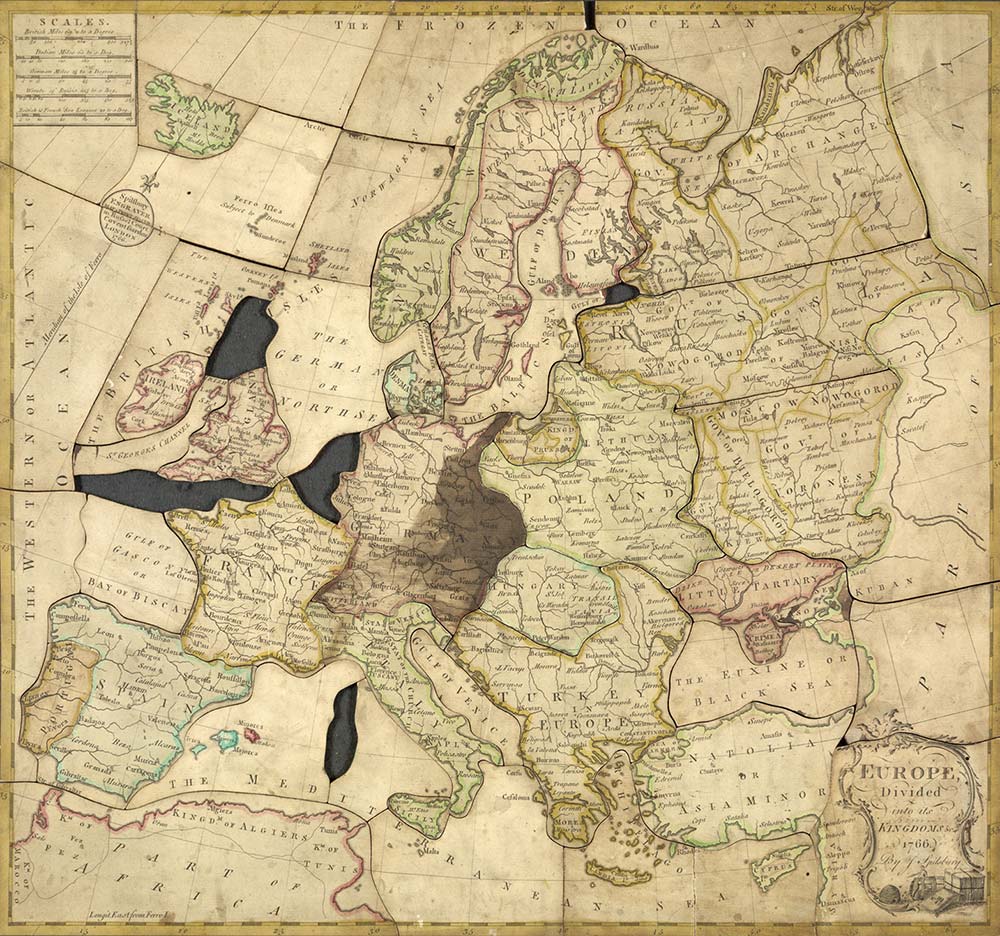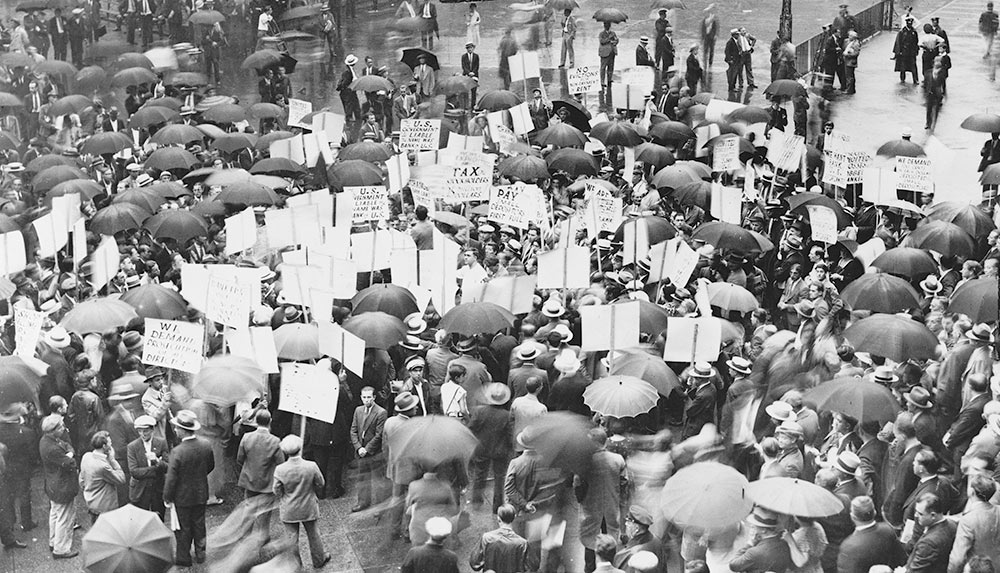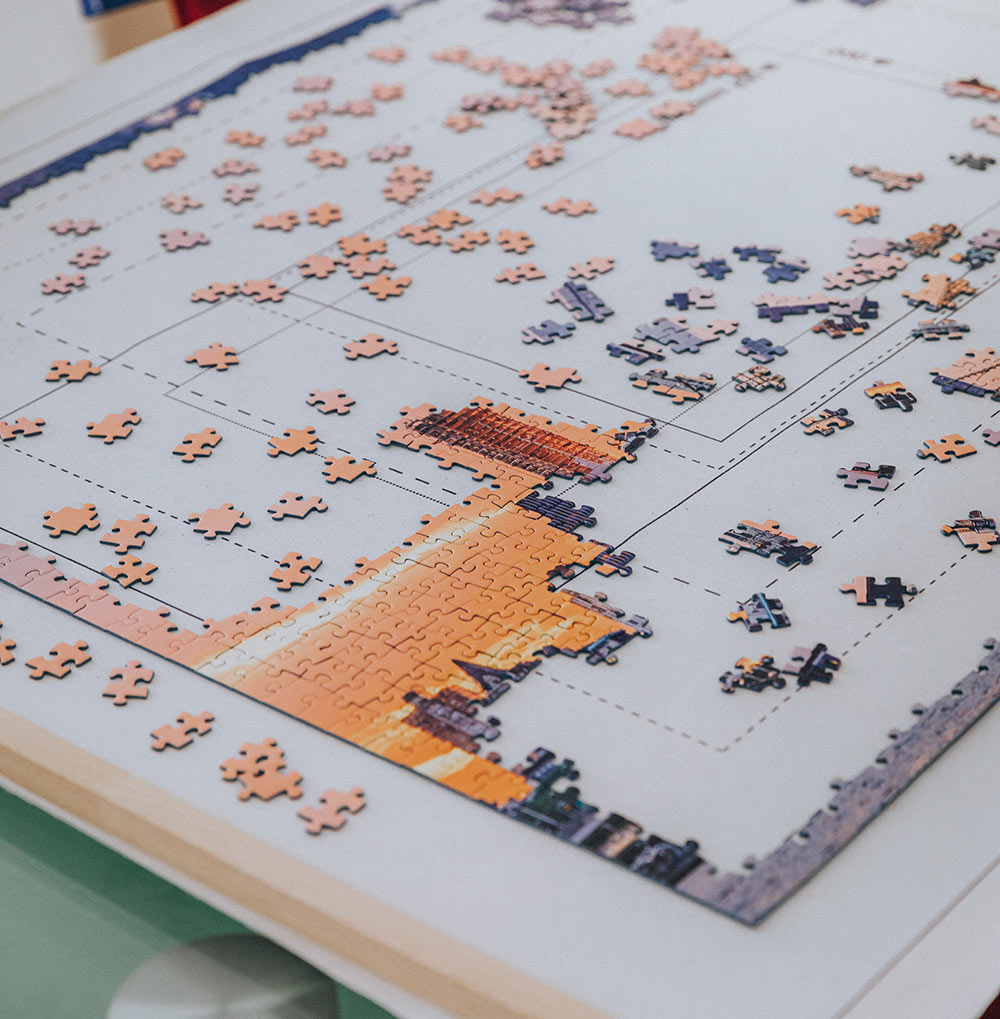History of Jigsaw Puzzles
The first known jigsaw puzzle was created around 1760. Made out of mahogany hardwood by engraver and cartographer John Spilsbury from London. His jigsaws were ‘dissections’ of maps of the British Empire, with the national borders acting as the separate pieces. He created them as an educational tool to help aid youngsters learn the countries and their location. Reportedly they were used to teach the children of King George III and Queen Charlotte.

Around 1880 puzzles generally were produced using a tool called the ‘fretsaw’, a bow saw that is used to cut tight curves in wood. The name fretsaw, does sound similar to jigsaw and hence maybe the origin of why they are called ‘jigsaw’ puzzles
Cardboard puzzles however started being produced in the late 1800s. But they did not become popular immediately as they lacked the premium feel of woodcut puzzles. Cardboard jigsaws were also not as easy to produce at the time, leading to higher production costs.

The Great Depression during the 1930s was a period when puzzles really became popular with the masses. This was down to their cheap prices and the evolution into becoming a more of an adult targeted product, with increased complexity in the finished products.
They were also used as a clever marketing advertising strategy. With puzzles promoting products instead of a simple picture. These ensured that customers would happily stare at an advert for hours on end.
Postwar production changes allowed for cardboard jigsaw puzzles to become more cheaply produced. This allowed them to become the prominent form as we know today, loved by adults and children around the world.

